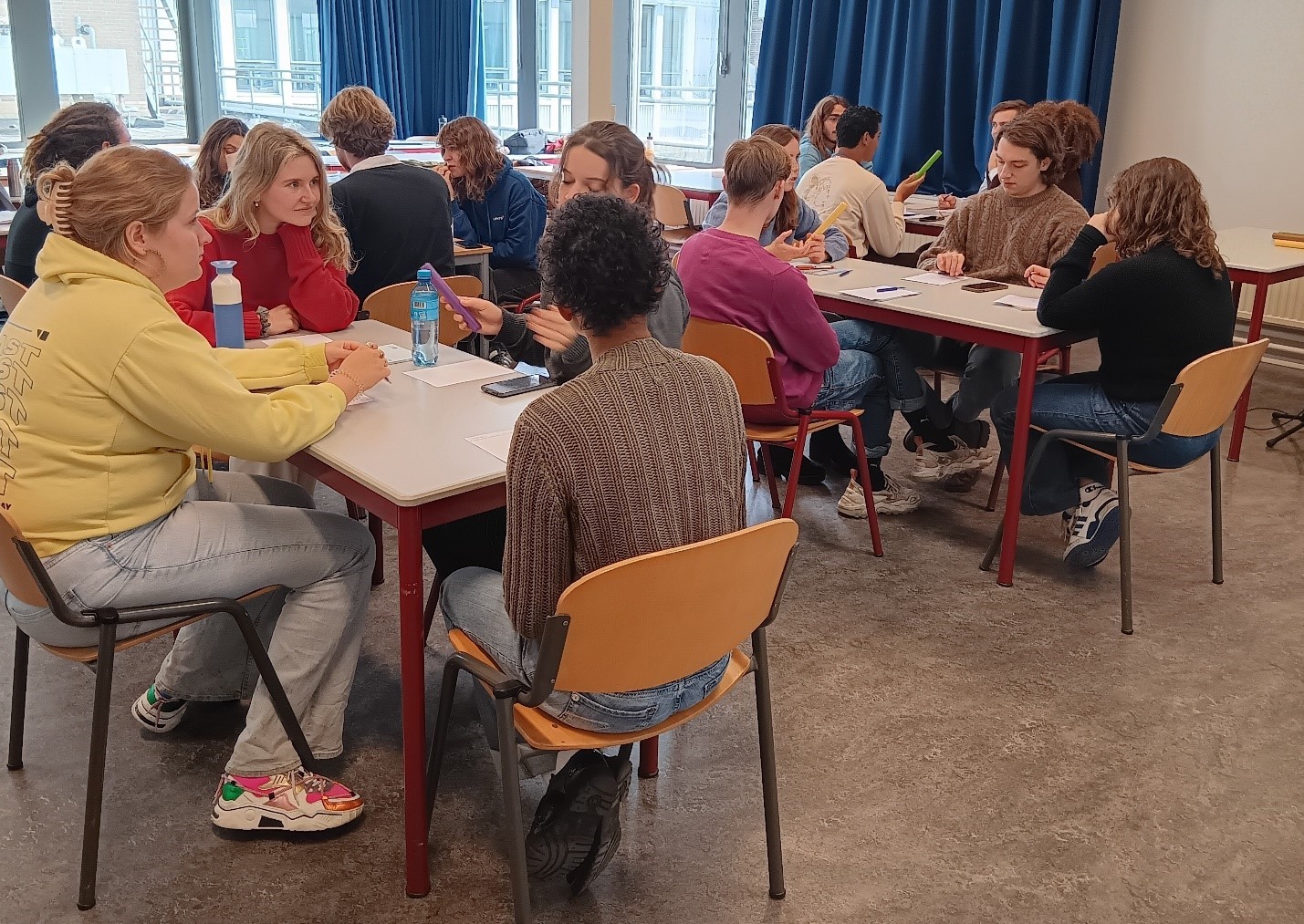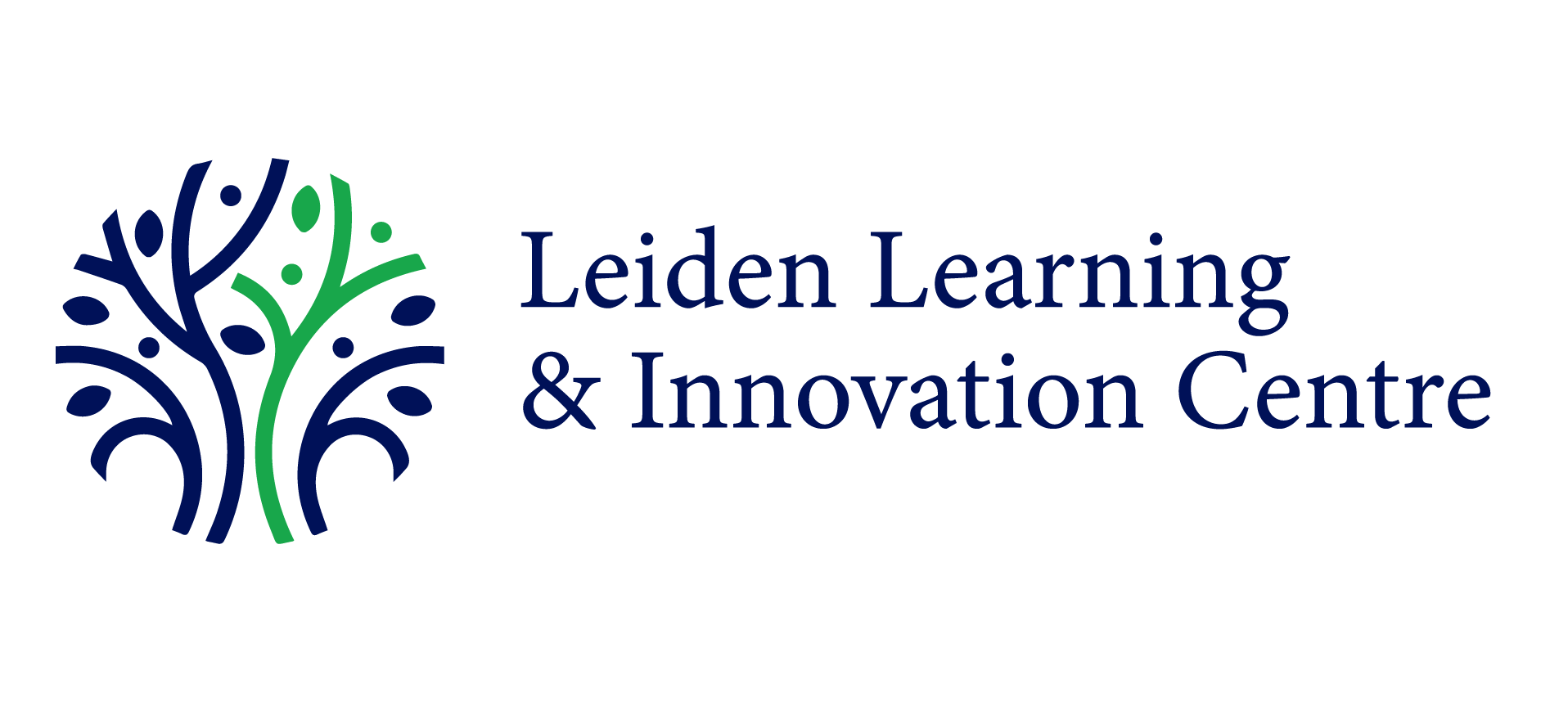Improving Student Well-Being With the Dialogue Method
How can we improve students’ well-being? Perhaps one way to do this is to teach students how to practice and facilitate a dialogue. Our education development specialist, Eva van Leeuwen, is currently involved in evaluating the Comenius Senior Fellowship project of lecturer Dr. Karin Nijenhuis (African Studies Centre Leiden). This project aims to integrate dialogue as an educational method within Leiden University. The method enables students to feel more connected, which consequently increases their sense of well-being.
What is dialogue?
The dialogue method, developed by David Bohm (1996/2018), is a structured and attentive manner of having a conversation, starting from the idea that we are all connected. By following rules such as careful listening, suspending judgment, and asking in-depth questions, different perspectives are able to be presented and acknowledged. This not only makes participants feel heard and seen, but it also creates space for connection and new insights. The dialogue is the opposite of discussion or debate – forms of conversation that are more about individual sharing and convincing others than about attentive listening and understanding. In this world, where polarization is ever-increasing, while the ability to listen is decreasing, the dialogue method can help when it comes to discussing potentially controversial topics such as migration, climate change, and diversity (Nijenhuis, 2023; Nijenhuis, 2024).
The dialogue at Leiden University
Ideally, dialogue is practiced multiple times within one course. Each dialogue session focuses on a central question or statement. Although variations in the set up are possible, a dialogue in Karin’s project generally takes place in groups of three to five students (sitting in a circle) and consists of a certain number of fixed elements, lasting approximately 1 hour in total. First, there is a ‘check in’ round to break the ice and foster a feeling of safety within the scenario. In this round, students can briefly share how their day has been so far or how they are feeling, for example. Next, each group member has individual speaking time to share their thoughts and ideas about the dialogue question. Only a single participant is allowed to speak at any time. The other group members remain quiet and listen attentively. When the time to speak is over, the other group members have the chance to ask the previously speaking participant questions. To discourage people from interrupting each other, a so–called ‘talking stick’ can be used. Only the person who holds the talking stick is allowed to talk. When all group members have spoken and answered questions from their colleagues, participants are asked to reflect on new insights they have gained through the dialogue.
In autumn 2023, Karin Nijenhuis implemented the dialogue method as a pilot within two existing African Studies courses. In spring 2024, she introduced the Honours class ‘Preventing Polarization: Facilitating Dialogue in a Crazy World’. In this class, she trained students not only to practice, but also to facilitate a dialogue, both in and beyond the classroom. In the same period, Karin provided a Training of Teachers (in collaboration with Najat El Hani from LLInC) for eight teachers from the Faculty of Humanities. The teachers were trained as dialogue facilitators, with the ultimate goal for them to integrate the dialogue into their own education.
 Students practicing the dialogue. Image courtesy of Karin Nijenhuis.
Students practicing the dialogue. Image courtesy of Karin Nijenhuis.In close cooperation with Karin, I evaluated the pilot, the Honours class, and the teacher training. I distributed surveys and held focus group interviews with students and teachers to learn more about what works well as well as what could be improved. I also asked participants about the new skills they have learned and the support they need to become more familiar with the dialogue.
So far, the general impression is that both students and teachers are very positive about the dialogue as an educational method. Teachers believe that learning by doing is important: the more you practice, the more your dialogue skills will improve.
Students realize that, during their school career, they ‘only learned how to talk, rather than how to listen’. They recognize the value of the basic principles of dialogue and apply them in both their professional and their personal lives. Moreover, the students who followed the Honours class unanimously acknowledged that they felt connected to their fellow students at the end of the course.
What’s next?
Feeling a connection and sense of community is crucial for well-being (Ryan & Deci, 2018; Gubbels & Kappe, 2019a, 2019b; Kappe, 2021; cf. Tinto, 2012). What exactly is, however, the impact of dialogue on feeling connected? Together with Mario de Jonge (ICLON), we will dive deeper into this question. In the upcoming year, the teachers who followed the training are implementing the dialogue into their own lectures and workgroups. For the teachers who will use dialogue at least three times within their course, we will examine how connected their students feel to their fellow students and how this sense of connection changes over time.
In the meantime, the Leiden University Dialogue in Education Network (LUDIEN) has been launched. The teachers and students involved in this project will meet regularly to share experiences and discuss questions and issues they encounter. For example: does a shorter version of the dialogue work just as good as a longer version? Or: how to organize dialogue within a large–scale lecture? Also, a teacher professionalisation module and an online manual are being developed. I will keep you posted on this beautiful project!
References
Bohm, D. (2018). Over dialoog: Helder denken en communiceren [On dialogue: Clear thinking and communicating] (Uitgeverij ten Have, Trans.). Ten Have. (Original work published 1996)
Gubbels, Nikkie & Rutger Kappe. (2019a). Bevorderen studentenwelzijn [Improving student well-being]. Hogeschool Inholland, Lectoraat Studiesucces, Domein Onderwijs & Innovatie.
Gubbels, N. & Kappe, F.R. (2019b). Studentenwelzijn 2017-2018. Resultaten kwantitatief en kwalitatief onderzoek naar het welzijn van studenten van Hogeschool Inholland [Student well-being 2017-2018. Results quantiative and qualitative research on the well-being of students at Hogeschool Inholland]. Lectoraat Studiesucces, Hogeschool Inholland: Haarlem.
Kappe, F.R. (2021). Zonder relatie, geen prestatie: over het belang van verbondenheid [Without relationship, no performance: on the importance of connection]. NRO Symposium Hoger Onderwijs: Nieuwe richtingen na de pandemie?
Nijenhuis, C.T. (2023). Feel connected! The integration of dialogue as a teaching method in higher education to improve student well-being. Aanvraagformulier Comenius Senior Fellows 2023. Afrika-Studiecentrum Leiden, Universiteit Leiden.
Nijenhuis, C.T. (2024). Honours Class Preventing Polarization: Facilitating Dialogue in a Crazy World. Syllabus Dialogue Honours Class 2023-2024.
Ryan, R., & Deci, E. L. (2018). Self-Determination Theory: Basic Psychological Needs in Motivation, Development, and Wellness. Guilford Publications.
Tinto, V. (2012). Completing college: Rethinking Institutional Action. University of Chicago Press.

